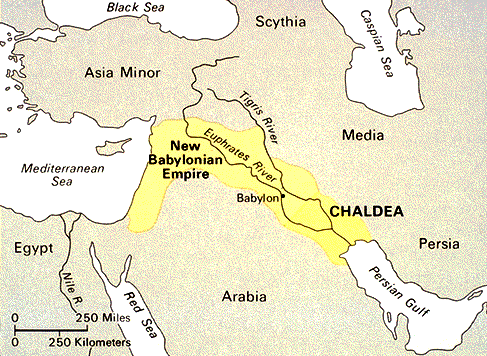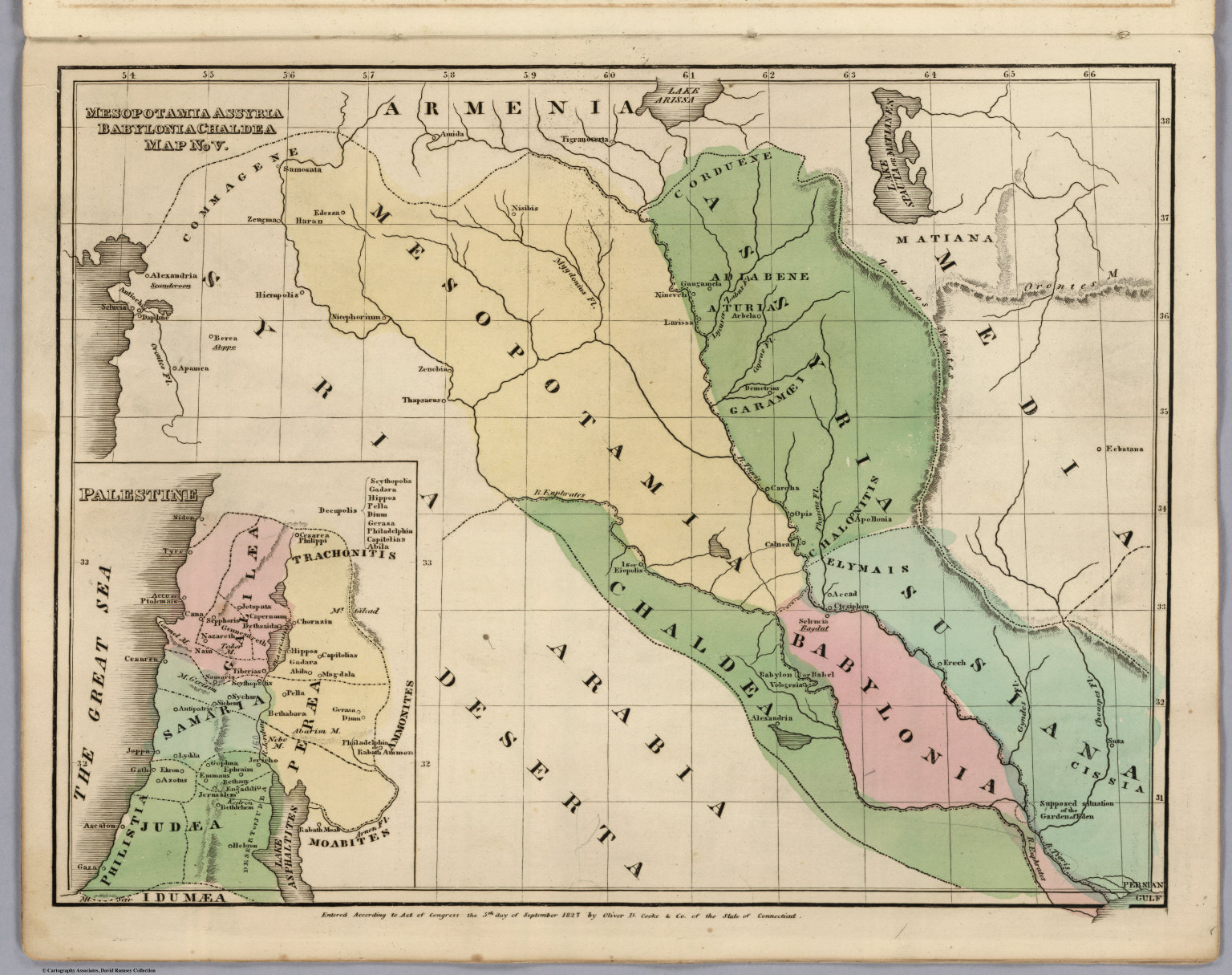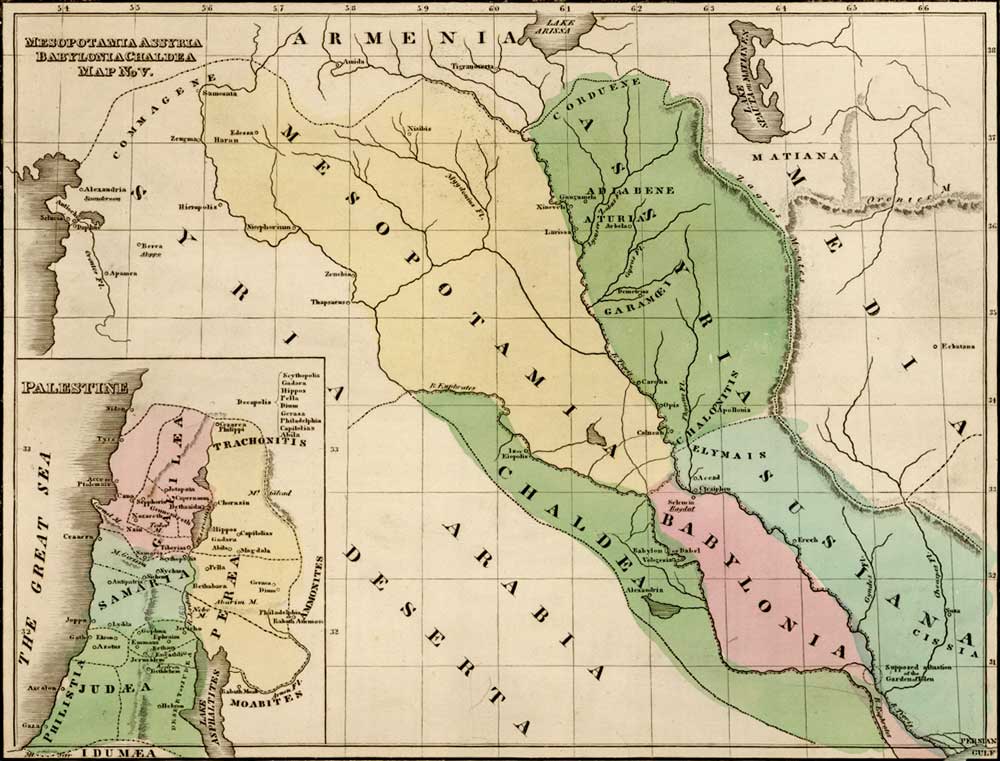Chaldea
The Chaldeans were a Semitic people in southern Mesopotamia in the first millennium BC Regardless existed an eponymous people on the shores of Lake Van in eastern Anatolia. This Chaldaoi and the Chaldeans were confused in the ancient sources again and again, that the people of Urartu worshiped the God Khaldi. The history of the two nations was completely independent of each other.
Origin / Title
The Babylonian Chaldeans ( Akkadian kurḪašdu, Hebrew Kasdim, Aramaic kasdajja ) spoke a Semitic language and penetrated from the coast of the Persian Gulf forth against Babylonia. You may have had far-reaching connections to Oman to Yemen, which is why currently three theories are discussed about their origin:
- Relationship with the Syrians, since Aramaic names were common among them,
- Relationship with the Babylonians, because neuakkadischer name,
- Relationship with Eastern Arabian populations.
In the 8th century BC Chaldean local populations adapted the rites, and the lifestyle of the Arameans in rural areas. Likewise, they took their language. At the beginning of the Neo-Babylonian dynasty, around 625 BC, the general assimilation process was far advanced, they were partly aramäisiert and partly babylonisiert, so that an identification of the original Chaldeans was simply no longer possible.
Historical Overview
The Babylonian Chaldeans divided into five "houses" (bit ), with bit and bit Dakuri Amukkani the larger "houses / tribes " and Sha'alli bit, bit Schilani, Bit Jakin the smaller "houses" represented. For the first time the Babylonian Chaldeans are mentioned under Ashurnasirpal II to 883 BC.
Under Tiglath- Pileser III. immerses the Chaldean " King of the Sea country," Merodach - baladan ( biblical name), up from bit Yakin even as tribute payers. King Nabu - mukin - zeri conquered the land of Babylonia, but was of Tiglathpileser III. dethroned and imprisoned.
Sargon II could not prevent Merodach - baladan 721-710 BC the throne of Babylonia took and was able to successfully compete with first Sargon II. Cleverly he could form a strong anti-Assyrian coalition with an alliance Babylonians / Syrians / Chaldeans, Babylonian / Elamites. In a battle of Dér subject to Sargon II nor the Elamite king Ummanigas ( Chuman - nikasch ) before he could drive into exile in Elam BC Merodach - baladan 710. In the year 702 BC Merodach - baladan again claimed more than nine months against Sennacherib, before he was defeated by this far from Kish.
Only under their king Nabopolassar came the Chaldeans to full dominion over Babylonia, whose throne 625 BC Nabopolassar ascended. This marks the beginning of the so-called Neo-Babylonian Empire.
In later times, the term " Chaldeans " is synonymous with astrologers or soothsayers, presumably because of the schools of learning in Orchoe, Borsippa and Sippara.
Today Chaldeans are members of the Chaldean Church united with Rome. They live for the most part, in Iraq, where one most of the Chaldean Aramaic Christians of the Chaldean Church. After the Arabs and Kurds, they formed the third largest ethnic group in the country.
Ancient Religions
The Chaldeans had a polytheistic belief, about the not much is known. It is certain that the people believed in demons pronounced:
"Against the head of man directs his power of cursed Asak, against the lives of the people of the cruel Nemtor, against the neck of the people of the shameful Utuk, against the chest of the man of ruinous aluminum, to the bowels of the people of the evil Ekim, against the hand of the people of horrific Gallin. "
" Chaldeans " as a synonym for astrologers
As the " Chaldeans " are in the parlance of the first pre-and post-Christian centuries referred to the star- qualified consultants and scientists in Mesopotamia, about which one knew in Israel since the Babylonian exile more details (see also the book of Daniel ). They were often of Persian or Median origin, but had their field of Mesopotamia and Arabia to Anatolia and the Mediterranean coasts.
The Chaldeans got on, inter alia, on a calendar account and started their astronomical symbol language for the representation of complex relationships. In the sphere of influence of Babylon they had a religious function - mainly because you interpreted the planetary orbits with their inexplicable loop movements as expression of will of deities, which had to fathom.
The Biblical Magi are used as the "wise men from the East " and described as Magi, who possibly came from Babylon, which was a center of astronomy. The Greek version of the New Testament tells of " magicians who come from the 'East' and saw a rising star ". Therefore, it is partially accepted that it has acted to the Chaldeans. Alternative interpretations of the group interpret rather than representatives of the Persian- Median space, possibly representative of the priestly caste of the lean or (based on comparisons of old traditional pictorial representations of clothing ) as Syrians.
History of Research
Wilhelm Gesenius tried the Chaldeans ( Chardim ) with the Kurds ( Kard ) into connection. After William Kennett Loftus boasted the Kurdish tribe of Kaldani descended from the Chaldeans.
Speculation about the Aryan origin of Near Eastern peoples were the late 19th and early 20th century increasingly popular because they increased the age " Indo-European " or " Aryan" civilizations. In a climate of growing anti-Semitism did not want to write the Semites the oldest civilizations of mankind. " Now, if the original Babylonian civilization should now be but Aryan ," asked Daniel Brinton in 1895 hopefully.










